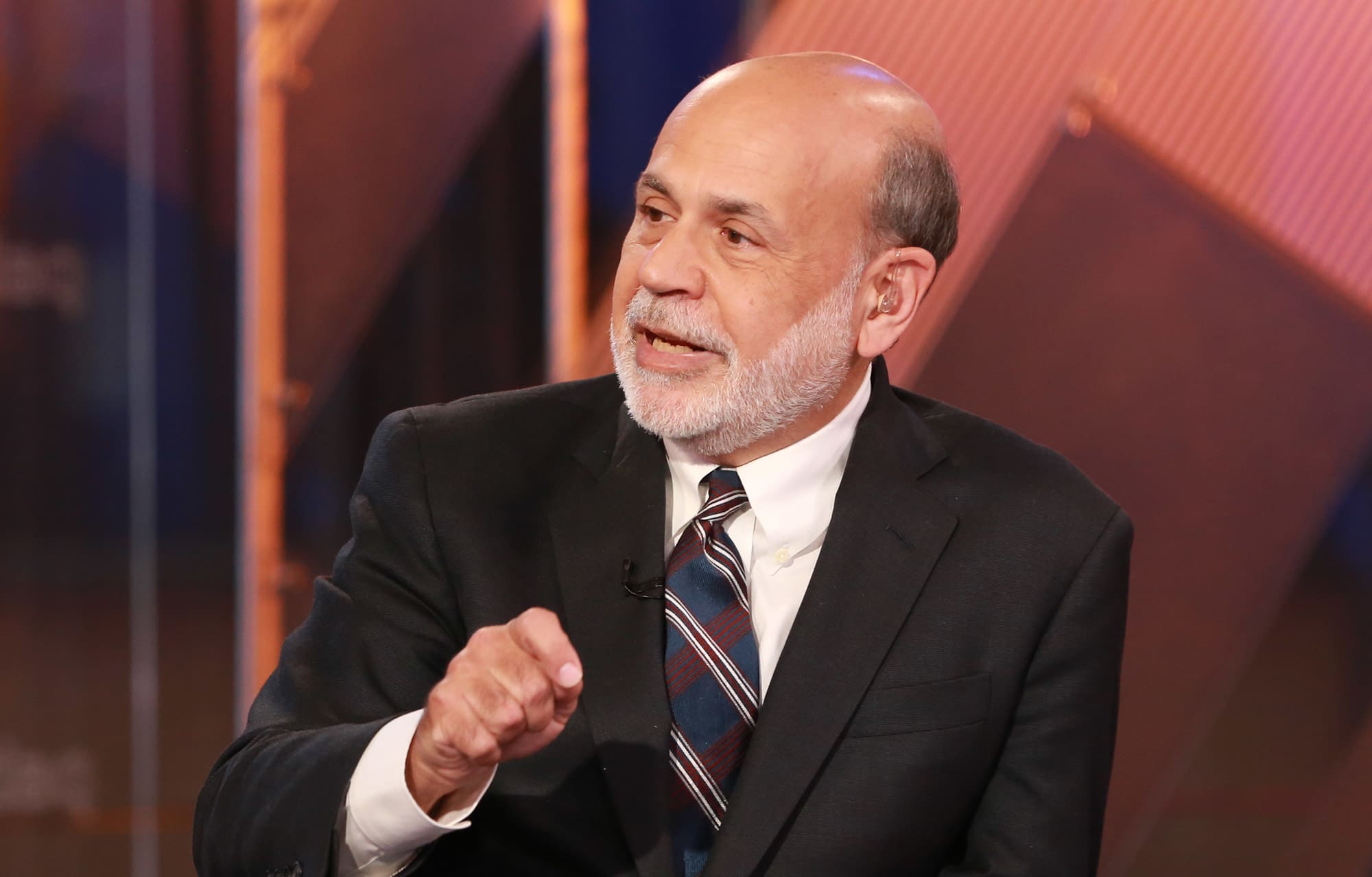The Federal Reserve should consider negative interest rates as a potential weapon to fight future economic downturns, former central bank Chairman Ben Bernanke said.
In a blog post released over the weekend, Bernanke cited the benefits of at least keeping the option alive to take short-term rates below zero. Doing so, he said, would give the Fed flexibility at a time when its policy toolkit is limited.
“The Fed should also consider maintaining constructive ambiguity about the future use of negative short-term rates,” Bernanke said in a post released in conjunction with a presentation at the American Economic Association conference in San Diego. The option “would provide useful policy space” particularly with historically low rates already in place.
The comments come as Fed officials are weighing how they will respond to the next crisis while simultaneously evaluating the extraordinary tools they used during the last one. Bernanke helped pioneer the use of near-zero interest rates combined with quantitative easing, the aggressive asset purchases that pushed the Fed’s balance sheet past $4.5 trillion as it sought to pull the economy out of the Great Recession.
Negative rates, he said, have been used to positive effect elsewhere in the world. In Europe, rates across the spectrum went below zero earlier this year, with about $11 trillion of sovereign debt still possessing negative yields. At one point, the entire German government yield curve was negative.
‘Unwise’ to ‘categorically’ rule out
Bernanke is not the only central bank authority to talk about negative rates.
Former Chairman Alan Greenspan told CNBC in September that it’s “only a matter of time” before below-zero yields come to the U.S. When she was chair, Janet Yellen said in a letter that she would “would not completely rule out the use” of negative rates. Current Chairman Jerome Powell has said he does not expect the Fed to go that route.
“Categorically ruling out negative rates is probably unwise, as future situations in which the extra policy space provided by negative rates could be useful are certainly possible,” Bernanke said in a companion paper to his speech.
Looking forward, Bernanke also advocated the use of even more QE, saying research he conducted showed that the purchases, combined with “forward guidance” in which the Fed commits to keeping rates low for an extended duration, provide the equivalent of 3 percentage points worth of rate cuts.
“Central bank purchases of longer-term financial assets … have proved an effective tool for easing financial conditions and providing economic stimulus when short rates are at their lower bound,” he said. “The effectiveness of QE does not depend on its being deployed during a period of market turbulence.”
He also said that QE has not resulted in some of the problems, particularly inflation, that its critics predicted.
He further endorsed an idea recently floated by Fed Governor Lael Brainard to institute rate caps as a way to control the yield curve.
Bernanke did, however, note the importance of guarding against financial imbalances that could come with inflated stock market prices and excessive risk taking with public and private debt.
The stimulus tools are “likely to involve extended periods of short-term rates at the lower bound, as well as longer-term yields that are often zero or negative — a situation that may pose risks to financial stability or other costs,” Bernanke said.
